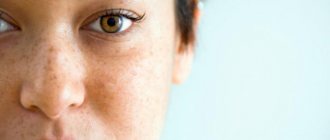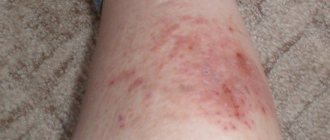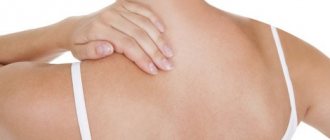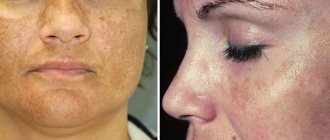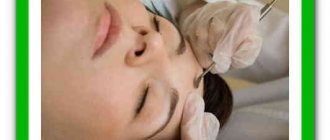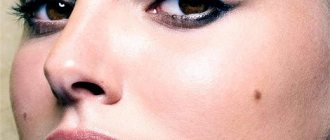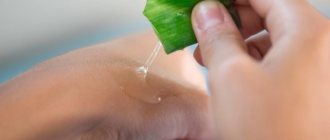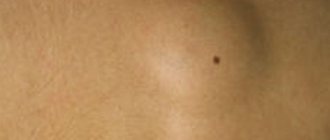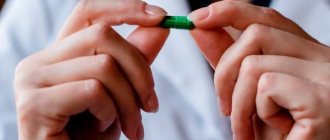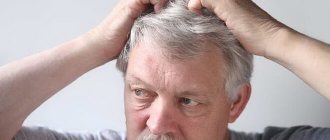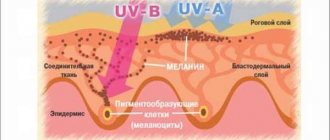Old age is wisdom, accumulated experience and another stage in life. However, most often old age is associated not with these concepts, but with the aging of the body: diseases, gray hair, wrinkles and pigmentation. But if gray hair and wrinkles can be dealt with with the help of beauty salons and modern cosmetic procedures, then what about age spots?
Boarding houses
for the elderly
About us
"TSARSKOYE SELO"
25
people
from 1500 R
Find out more about the boarding house ›
Causes of age spots on the body
Many factors can provoke pigmentation on the body. The main ones include:
- Hereditary predisposition.
- Problems with hormones, especially the thyroid gland.
- Age from 13 to 16 years.
- Solarium abuse.
- Prolonged exposure to the sun.
- Skin abnormalities.
- Infectious diseases.
- Pregnancy.
- Liver and kidney diseases.
- Metabolism problems.
- Daily consumption of junk food.
- Vitamin deficiency in the body.
- Smoking and alcohol.
- Constant unrest.
Note: often the formation of spots on the body is caused by the application of low-quality cosmetics.
Types of age spots and their photos
Experts classify pigmented areas that appear on the body into several types.
Primary, these include:
- freckles;
- congenital or acquired spots from yellow to brown;
- senile.
Secondary - formed as a result of past diseases, especially infectious ones, or are a consequence of inflammatory processes on the skin.
Pigmentation is also classified by color:
- pink or light brown;
In 75% of cases they are formed under the influence of ultraviolet radiation.
- brown - signal hormonal imbalances or problems with the functioning of internal organs;
- red – occur after sunburn or are formed during inflammatory processes in the body;
- white – observed when there is a disturbance in the formation of melanin;
- yellow - can signal skin diseases;
- black - often a sign of skin pathology.
Important: only a doctor can correctly classify the spots on the body.
Why do spots appear?
The root cause lies in the aging of the body and the slowdown of metabolism. Melanin is unevenly distributed in the skin of an elderly person, which is why pigment spots form in certain areas where it has accumulated the most. Small brown spots appear on the human body, which resemble freckles.
Most of them are not dangerous, but there are also types of spots that can develop into malignant tumors. For this reason, it is important to monitor the condition of your skin. If changes occur with pigment spots: their size increases, discharge appears, color changes, you need to consult a doctor.
Frequent causes of pigmentation development and their localization:
• Liver diseases: pigmentation on the hands; • Gastrointestinal problems: dark spots on the face near the mouth; • Strong ultraviolet exposure: spots on the back, chest, neck, forearms. Spots are formed due to frequent and improper sunbathing, which causes skin cells to produce more melanin than usual; • Hormonal disorders in women during menopause: lack of estrogen and progesterone provokes the appearance of age spots; • Problems in the activity of the nervous system: spots on the forehead; • Lack of nutrients due to vitamin deficiency and poor nutrition; • Long-term use of medications that increase skin sensitivity to UV rays; • Genetic predisposition: a person develops spots in the same way as his parents.
The appearance of spots can be caused by skin injuries, taking various medications, lack of nutrients in the diet, excess weight, and frequent contact with allergens.
Diseases of the internal organs contribute to the deterioration of skin color. Most often these are diseases of the kidneys, gall bladder, liver, gastrointestinal tract, cardiovascular and endocrine disorders, and helminthic infestation.
Which doctor should I contact?
When pigmentation is noted on the body, you need to visit a dermatologist. It is this doctor who will be able to identify the causes of skin changes and prescribe appropriate treatment.
In some cases, especially when the spots appear due to infectious or inflammatory diseases, the patient is referred to:
- infectious disease specialist;
- venereologist;
- gynecologist.
Note: if a specialist draws a parallel between pigmented areas and hormonal disorders, the patient will be referred to an endocrinologist.
Treatment of age spots
There are many ways to treat pigmentation on the body. However, for a positive result it is necessary:
- Follow doctors' recommendations.
- Eliminate all factors influencing the formation of skin changes.
- Complete a course of therapy.
Important: the appropriate treatment option is selected by doctors after examining and analyzing the pigmented areas.
Creams and ointments
Various creams and ointments with a whitening effect help to significantly reduce the severity of stains. They are applied to the desired parts of the body and are not washed off. The duration of the course is selected for each individual patient, but on average varies from 14 to 30 days.
Important: certain products require a longer or shorter period of application.
The most popular ointments that reduce pigmentation are:
- Zinc – dries the dermis and normalizes melanin production.
- Heparin - brightens the skin and also helps reduce swelling and redness on the epidermis.
- Retinoic – actively nourishes, brightens and improves skin color.
Among the creams that help remove age spots are:
- "Evinal";
- "Achromin";
- "Bielita Vitex".
Important: the application of any creams or ointments must be agreed with dermatologists.
Laser removal
Many types of age spots can be removed with a special laser. This beam acts gently on the skin, but at the same time destroys melanin in cells, which leads to lightening of the epidermis.
Laser exposure occurs on the superficial and middle layers of the skin.
Features of the technique are:
- no pain during and after the procedure;
- the ability to lighten volumetric and dark changes on the skin;
- recovery period up to 3 – 5 days;
Laser removal is indicated for many patients, but the procedure has a number of contraindications. Only the attending physician can refer you to such a course.
Important: Some people may benefit from more than one of these procedures. The quantity is determined by specialists.
Chemical peeling
Lightening the skin and evening out its color is possible with the help of special chemical peels performed in beauty salons.
The procedure is based on the application of acid to the required areas of the body, which acts on the subcutaneous layers and leads to:
- lightening the epidermis;
- reducing the volume of existing stains;
- reducing redness and inflammation;
- improving the appearance of the dermis.
Note: chemical peeling can affect different layers of the skin, but superficial peeling is the most gentle.
After the procedure, redness remains on the skin, which should disappear on its own after 2 to 4 days.
Important: such peels have side effects and contraindications, so they are recommended only for strict indications.
Mesotherapy
You can reduce the volume of pigmented areas and significantly lighten them using mesotherapy. It is based on the introduction of special injections into the subcutaneous layers.
Based on this, it happens:
- normalization of melanin production;
- reduction of inflammatory processes;
- improvement of metabolism;
- acceleration of regeneration.
Important: the general course of required injections is determined by the treating dermatologist.
What is it and features
Pigment spots are formations on the skin in the upper layer of the epidermis. The mechanism of appearance is associated with excessive production of melanin. Melanocytes are produced in the dermis and in the iris of the eye and hair. The colored areas vary in intensity and size.
The color of the spots is mainly from dark yellow to black-brown. They can be oval in shape, round with smooth edges, or not have a clearly defined border. First, a dark dot appears and begins to grow.
If growth does not stop for several years or the pigmented area begins to itch or become rough, this is a sure signal to consult a doctor. The increase in the size of the spot in a child can occur in parallel with body growth.
Brown spots on the skin of the face can be represented by: moles, freckles, birthmarks, lentigines. You can find many photos on Internet resources to clearly visualize the stains.
- Lentigines have a dense consistency and slightly rise above the surface of the skin, characteristic of older people.
- Freckles are lighter than other spots and are located in multiple clusters on the face (especially the forehead and chin area), as well as the back, neck, shoulders, and arms.
- Birthmarks are localized over the entire surface of the body and can grow to large sizes.
Moles can be congenital or acquired; they can arise due to an excess of melanin pigment, as well as due to the rapid proliferation of capillaries; they can be convex or smooth.
Folk remedies for treating spots at home
There are many ways to eliminate age spots at home using folk remedies.
The following are recognized as valid:
Cucumber mask with peach and grape oils.
Necessary:
- fresh cucumber – 2 pieces;
- peach oil – 3 drops;
- grape oil – 3 drops.
The cucumbers are washed, grated and mixed with oils. Next, the mask is laid out on the required areas and kept on for 25 minutes.
Tip: for the desired effect, you need to apply masks every evening for 25 days.
Cucumber-lemon compress. The juice is squeezed out of the lemon and cucumber, then everything is poured into one container and put in the refrigerator for 40 minutes. Afterwards, gauze is soaked in the product and applied to the pigment spots.
Important: the compress is kept for 35 minutes, then removed. The procedure is performed every other day until the desired result is obtained.
Sauerkraut compress. You need to soak a rag in sauerkraut juice and apply it to the pigment spot. After 20 minutes, the compress is removed and the body area is rinsed with water.
Note: it is recommended to do sauerkraut compresses daily until the skin becomes lighter.
Application of castor oil. The oil is applied to the required areas of the epidermis in one layer and is not washed off for half an hour.
Note: for noticeable lightening it is necessary to apply castor oil every other day and for one month.
Advice: the method is not suitable if a person has an oily type of epidermis.
Tonic with lemon.
To prepare you need:
- Squeeze juice from one lemon;
- add the resulting liquid to 30 milliliters of mineral water;
- mix;
- Place the prepared product in the refrigerator for 60 minutes.
Next, soak a cotton pad in lemon tonic and wipe the problem areas of the body twice a day.
Note: the duration of the procedures is 15 – 20 days.
Important: if you resort to folk remedies without a doctor’s recommendation, you can harm your skin and overall health.
Popular disposal methods
Women try to remove or disguise brown spots on their faces by resorting to cosmetics or traditional whitening methods. First you need to see a doctor. He will prescribe a series of examinations that will help find or exclude endogenous causes of the disease.
We recommend reading
- Pharmacy remedies for brown spots on the back
- How to get rid of darkening on the labia
- Treatment options for darkened lips
There are several groups of methods to get rid of brown spots.
Aesthetic procedures
Combined medicine and cosmetology have no difficulty in curing brown spots on the face of women.
- Peeling allows you to clean the upper part of the epidermis, activating the growth of new unstained cells. Excellent for light surface stains.
- Subcutaneous injection of hyaluronic acid, which has a whitening effect, can remove small formations.
- Laser therapy. The laser beam penetrates into the deeper layers of the dermis, stopping the production of melanin in the cells. Over time, the dead pigment is washed out and the affected area is compared with the overall skin tone.
- Point exposure to low temperature - cryotherapy.
- Subcutaneous injections of drugs with tyrosinase enzymes.
Traditional methods
An important condition for the use of folk remedies: the depth of the pigment is shallow and a doctor’s diagnosis must be carried out.
Recipes for folk remedies:
- Cucumber mask. Grind the vegetable, squeeze out the juice and mix with nourishing cream, add a few drops of lemon. Apply to facial skin for 15-20 minutes.
- Mix vinegar with hydrogen peroxide in proportions 1:2. Wipe your face with this product 4-5 times a day.
- Bodyagi powder with hydrogen peroxide. Combine the ingredients to form a thick paste, keep on your face for 10-15 minutes. Use a moisturizer after this mask, otherwise after a while the skin will become very flaky.
Cosmetology products
There is a huge selection of cosmetic products, also used in medicine, that help remove brown spots on the face. The most popular drugs: Skinoren ointment, Melantiv cream and Vichy Idealia PRO, Elure, sitomycin ointment.
Prevention measures
The likelihood of any type of pigmentation can be reduced by following preventive measures:
- In summer, do not go outside without sunscreen applied to your body.
- Avoid visiting a solarium, especially if your skin is light or prone to pigmentation.
- Do not use dubious creams, lotions and other products to care for the epidermis.
- Try to stay out of the sun from 11:00 to 16:00.
- Never take antibiotics or hormonal pills without a doctor's prescription.
Monitor your diet:
- exclude all semi-finished products;
- do not drink soda, alcohol and coffee;
- eat seasonal fruits and vegetables;
- consume a minimum of smoked meats, pickles and sweets.
Important: to improve skin color and normalize melanin production, you should drink 2–3 liters of clean water per day.
Age spots appear on various parts of the body and can be of any shape or color. They can be dealt with using many methods, ranging from laser removal to folk remedies.
The main thing is to coordinate any option for eliminating skin changes with your doctor and listen to all his recommendations.
Blitz tips:
- visit a medical office as soon as pigment spots begin to form;
- Make sure that on a sunny day the skin is protected from ultraviolet rays;
- if after any treatment option side effects begin or there is a deterioration in the skin condition, you need to visit a doctor and choose a different method of therapy;
- Do not start any salon procedures to lighten the epidermis without first consulting a dermatologist.
Prevention of skin pigmentation on the face: practical recommendations
To prevent the appearance of pigment spots resulting from the negative effects of sunlight, you need to monitor the characteristics of your phenotype.
People with fair skin, white and red hair need to minimize exposure to the sun, as they are most prone to the formation of burns and subsequent pigmentation of the damaged skin.
When sunbathing, it is advisable to use protective cosmetics. When choosing a cream or lotion, it is important to pay attention to the level of SPF (solar protective factor): for those with dark skin, this value may be lower, and for fair-skinned people it is better to choose products with a higher value.
The choice of cosmetic product with the required SPF value directly depends on your skin type
I live in a small resort seaside town. Once, when I was a teenager, I went to the beach with my friends. It was the middle of summer, hot, the sun was shining brightly (it is important to note here that I have very fair skin). We spent the entire period from 12.00 to 15.00 under the scorching sun: laughing, playing ball, swimming races, in general, the time flew by. It was only on the way back that I noticed that my skin had turned red. Arriving home, after some time, I began to feel an unpleasant burning sensation, especially in the areas of my face, shoulders, arms and legs. By evening, the body temperature rose to 38°C, the legs began to swell, and the skin became covered with small transparent blisters. It’s difficult to convey how frightened my mother felt. She immediately took the necessary measures and purchased sunburn ointment from the pharmacy. After a few days, the redness and swelling subsided. Years later, I had already forgotten about this incident, when suddenly one day while taking a shower, I discovered several dark spots on my face and shoulder area. Unfortunately, the sunburn was not in vain for me. This unpleasant incident served as a good lesson for me. Since then, I have always tried to monitor my time in the sun.
